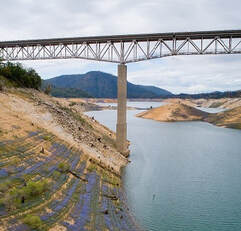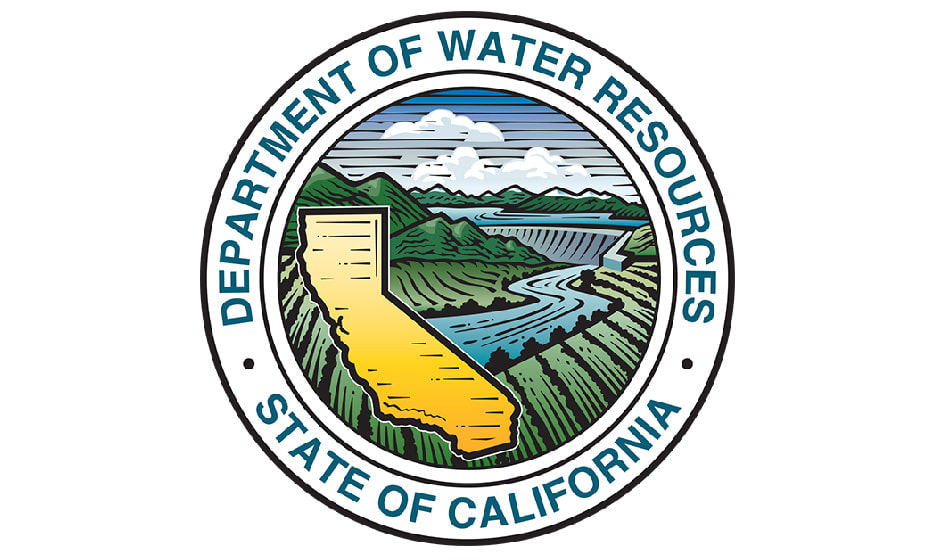 May 20, 2022 Inland Salmon Released into Lake Oroville California Department of Fish and Wildlife (CDFW) staff from the Feather River Fish Hatchery released 129,200 triploid fall-run “inland” Chinook fingerling salmon into Lake Oroville on May 12 at the Loafer Point Stage II Boat Ramp to support the recreational fishery. Of the 129,200 fish planted, 110,200 were direct release from the boat ramp and 19,000 fish were released into the main body of Lake Oroville from boats equipped with well holding tanks. This is the first year the fish were released into the main body of the lake to diversify and increase fishing opportunities. The inland Chinook measured about four to five inches in length and were raised at the Feather River Fish Hatchery. The fish are triploid, meaning unable to reproduce, which allows them to grow larger in size instead of putting energy into reproducing and it prevents any of these fish escaping Lake Oroville from hybridizing with sensitive downstream Chinook salmon populations. The Department of Water Resources (DWR) built, maintains, and funds the Feather River Fish Hatchery in partnership with CDFW staff who conduct fish spawning, rearing, and stocking activities at the hatchery. The Hatchery’s fish planting program has been in operation since 1968. A virtual tour of the Hatchery can be viewed on DWR’s YouTube channel and additional information can be found on the CDFW website.  GRAZING EFFORTS REDUCE FIRE RISK Drivers traveling Oroville Dam Boulevard East below Oroville Dam have been treated to views of hundreds of goats and sheep grazing on nearly 35 acres along the Brad Freeman Trail, Hyatt Powerplant, and the Lower Overlook. Next week they will be moved to Canyon Drive where they will be grazing for the next couple of weeks along the hillside from Royal Oaks Drive to the Upper Overlook Parking Area. To increase the amount of vegetation removed, a mixture of goats and sheep are used by contractor Hanski Family Farms because the animals prefer different vegetation types. Goats prefer ladder fuels (shrubs, bushes, smaller trees, or tree branches near the ground) and sheep prefer grasses. When goats stand on their hind legs, they can reduce ladder fuels up to six feet high. The grazing project is part of DWR’s Fuel Load Management Plan, which helps reduce wildfire risk, increase public safety, and enhance forest health in areas around Lake Oroville. In partnership with Butte County Fire Safe Council, DWR continues to use grazing as a sustainable method of fuel reduction around DWR’s Oroville-Thermalito Complex, including Lake Oroville. To learn more and to see goat grazing in action, visit DWRs YouTube Channel for a video of the March 2021 Lakeland Boulevard goat grazing project on DWR’s YouTube webpage.  Drought Update Warming temperatures, along with the driest January through March on record, has left the statewide snowpack at 14 percent of average for this date despite the recent late season storms. The main benefit of late season storms will be to prevent soils from drying out early in the season, which can aid runoff efficiency of the remaining snowpack to the state’s reservoirs. Reservoir levels across California vary depending on their location and source of inflows but all are reflective of the state entering its third year of drought. Locally, record-setting precipitation from the late October 2021 atmospheric river (AR) storm fell mainly in the Feather River (Oroville Dam) and American River (Folsom Dam) watersheds, missing a large part of the Lake Shasta watershed. Lake Oroville currently has more storage than on this date last year and the Department of Water Resources (DWR) is working to preserve as much storage as possible for future needs to maintain Delta water quality, protect endangered species, and meet senior water right obligations. DWR is also administering a number of grant programs to help mitigate and address drought impacts. One program, the Small Community Drought Relief Program, has already awarded more than $33 million to local counties and cities around Oroville for projects such as water system improvements and connections in Orland, Berry Creek, and Williams and for water hauling in Butte, Glenn, and Colusa counties. The DWR hydrology team and a California Water Board data specialist held a media briefing with reporters and meteorologists May 10 to discuss the latest drought data points and where we stand in terms of current conditions. A recording of the briefing is available on the DWR YouTube webpage. As we enter the warmer months, everyone is encouraged to find ways to save water, because despite current reservoir levels, the state is going to have water challenges later this year. See tips, tools, and ideas on the Save Our Water website. Information about real time local hydrological conditions, forecasts, and water conditions is available on DWR’s new website California Water Watch. Visit DWR’s Drought webpage for the latest information.  OROVILLE RECREATION The Spillway Boat Ramp opened on April 29, joining the open Loafer Point, Bidwell Canyon, and Lime Saddle boat ramps. The Foreman Creek and Stringtown cartop boat ramps are also open. Restrooms, potable water, and fish cleaning stations are not in service at the Spillway Boat Ramp area but portable toilets are provided – please plan visits accordingly. Information on current boat ramp status can be found on the California State Parks’ Lake Oroville State Recreation Area webpage. Scroll down to the link for “Current Launch Ramp Status”. Visitors to Oroville Dam and the Spillway Boat Ramp area will be able to use the newly constructed Lakeside Access Road which descends into the lake inundation zone before travelling back up to the Spillway Boat Ramp parking lot where they can access boat launch lanes, a shaded day use area with picnic tables, and multi-use trails suitable for hikers, bikers, and equestrians. The previous access road through the CHP screening booths and below the Emergency Spillway will only need to be used when lake elevations rise high enough to flood the new Lakeside Access Road. The Lake Oroville Visitor Center is open to the public on Tuesdays, Wednesdays, and Thursdays from 9 a.m. to 5 p.m. Pick up the Lake Oroville Trails Map, which shows more than 91 miles of trails available to equestrians, bicyclists, and hikers, at Lake Oroville State Recreation Area (LOSRA) kiosks, the Oroville Area Chamber of Commerce, and Feather River Recreation and Parks District. Visit the California Parks LOSRA webpage for current information on facility status and campground reservations. An interactive map of recreation facilities in DWR’s Oroville-Thermalito Complex is available on DWR’s Lake Oroville Recreation webpage. Information about the 11,000-acre Oroville Wildlife Area is available on the California Department of Fish and Wildlife webpage. CURRENT LAKE OPERATIONS The elevation of Oroville’s reservoir is about 776 feet elevation and storage is about 1.93 million acre-feet (MAF), which is 55 percent of its total capacity and 69 percent of historical average. Lake Oroville likely hit its peak storage for this Water Year on May 8 at 1.94 MAF, about 400,000 acre-feet higher than the peak in 2021. Expect dry and very warm temperatures over the weekend with forecasted temperatures increasing to the mid- to upper 90s into next week. The Feather River releases are at 2,200 cfs to meet downstream Delta water quality and outflow needs. Flow in the low-flow channel through the City of Oroville is 650 cfs and flow through the Thermalito Afterbay Outlet is currently 1,550 cfs. Flows are assessed daily. The public can track precipitation, snow, reservoir levels, and more at the California Data Exchange Center at www.cdec.water.ca.gov. The Lake Oroville gage station is identified as “ORO”. All data as of midnight 5/19/2022  California is entering its third year of drought conditions. With water conservation now a way of life in California, everyone is encouraged to find ways to save water. See tips, tools, and ideas on the Save Our Water website. Information about real time local hydrological conditions, forecasts, and water conditions is available on DWR’s new website California Water Watch. Comments are closed.
|
Archives
May 2024
Categories
All
|


 RSS Feed
RSS Feed